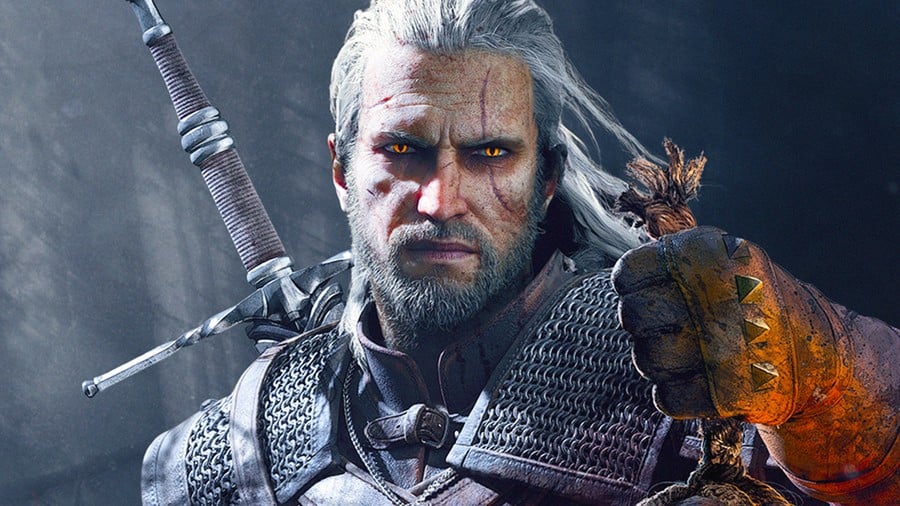
The Witcher 3: Wild Hunt released five years ago today, on the 19th May 2015. And seeing as it remains one of our favourite PlayStation 4 games of the generation, we thought that it would be worth revisiting CD Projekt Red's role-playing adventure. For the past few months, we've been dipping in and out of Geralt's journey, reliving as many of his monster-slaying shenanigans as possible.
Below, we've broken down our revised thoughts on The Witcher 3 -- five whole years after we first penned our 10/10 review.
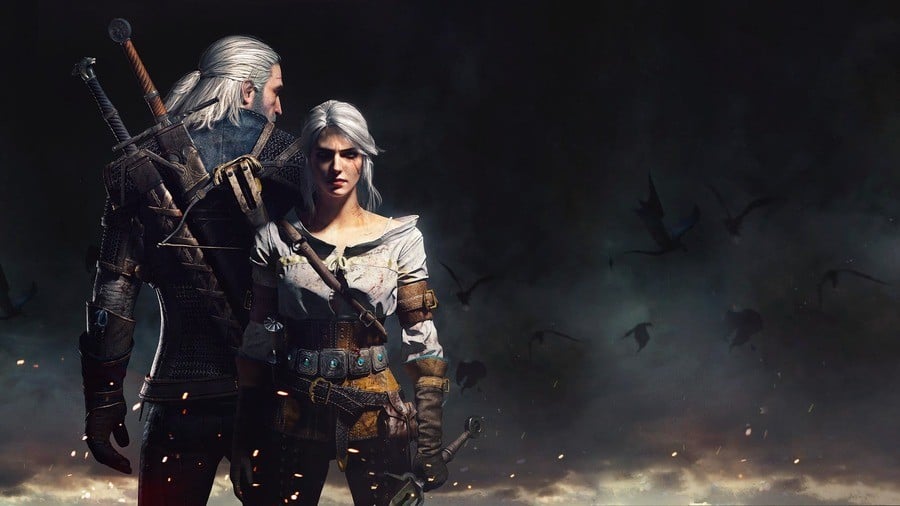
The Writing
The Witcher 3 is held together by its script, which, back in 2015, pretty much set the bar for RPGs of its kind going forward -- and the crazy thing is that it's still the gold standard. We've played a lot of similar games in the last five years, but quite frankly, none have come close to reaching the heights of The Witcher 3's phenomenal writing.
It's easy to forget that The Witcher 3 is packed with dark comedy and dumb jokes. Humour can be a slippery slope in any medium, but here it's used to excellent effect. The world of The Witcher 3 is often so gritty and damning that an aversion to comedy could render the experience overly oppressive. It's fortunate, then, the title's got such a great sense of humour. From farting farmhands to Geralt's sarcastic quips, it's the comedy that makes the game's characters feel grounded and human.
But the writing's greatest accomplishment is how succinct it all is, despite the sheer scope of the open world adventure. RPGs that last hundreds of hours have a tendency to ramble, repeating key points and getting bogged down in unnecessary detail. In contrast, The Witcher 3's dialogue moves along at a consistently brisk pace, yet it's able to tell you everything that you need to know. It's masterfully crafted from beginning to end.
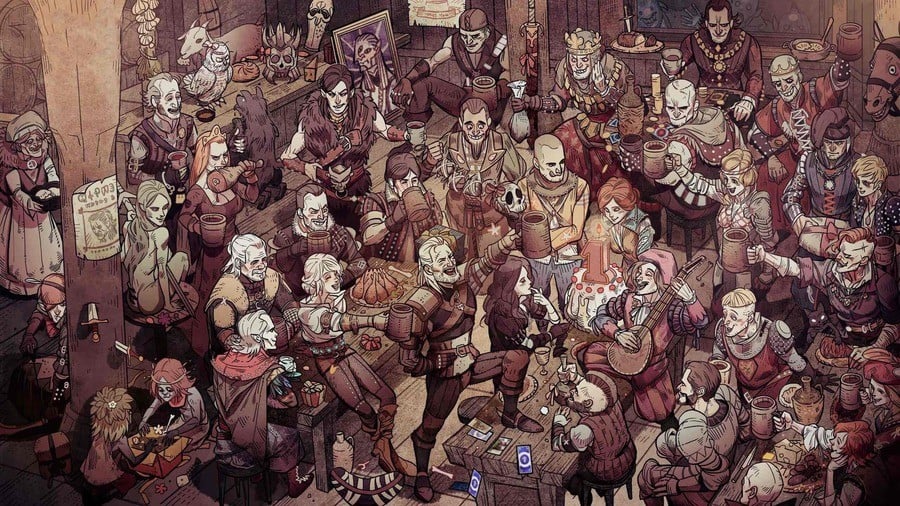
The Characters
It goes without saying that in order to deliver stellar writing, you need stellar characters -- and The Witcher 3 has them in abundance. Geralt's the obvious place to start -- an established protagonist who isn't just the emotionless coin-hungry killing machine that he's made out to be. Creating a badass main character is easy -- the hard part is making them feel human.
As mentioned, humour plays an important role here. Geralt wouldn't be much fun if he was unable to share a dirty joke with Dandelion or take part in an impromptu snowball fight with Ciri. The game's also quick to remind you of Geralt's deep-seated fears and the often undesirable implications of his actions. By no means is he perfect, and that's what makes him relatable, despite the fact that he's a superhuman monster slayer.
Of course, it helps that the White Wolf is surrounded by an outstanding cast of secondary characters. Yennefer and Triss are both immensely powerful sorceresses that each have their own motivations and doubts. Dijkstra is a schemer who plots a king's assassination, yet his cause is driven by rational thought. No one in The Witcher 3 is black and white. Even the Wild Hunt -- the bad guys -- ultimately have their reasons.
But if any characters truly sell the world of The Witcher 3, it's the common folk. We'd go as far to say that these are the best peasants to ever grace a video game. Downtrodden, simple people who have no choice but to put up with war, famine, and grave hags stealing their children. There's a bleak realism to each and every one of them, but as with many things in The Witcher 3, it's laced with a dark sense of humour that we can all relate to.
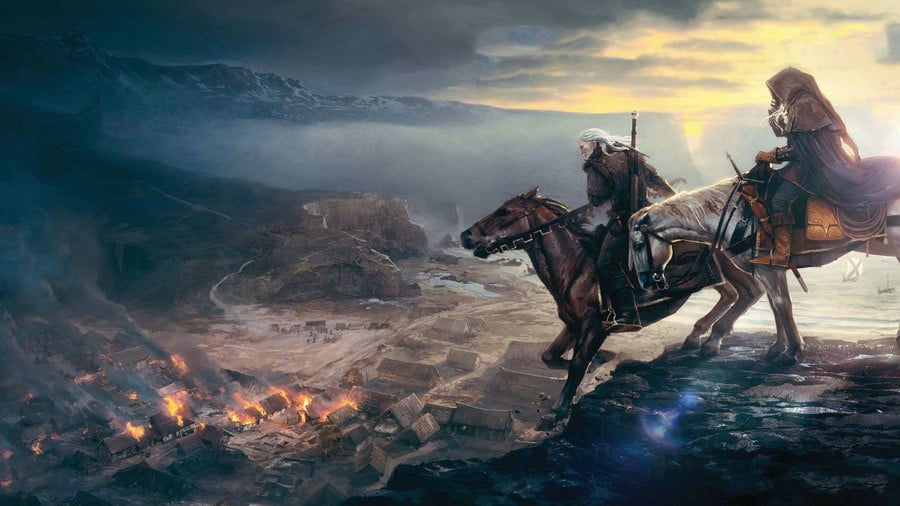
The World
The Witcher 3 is very much a game that's driven by quests rather than exploration. Some parts of the map serve no purpose until you have a reason to be there, and so it does feel like the game's approach to open world design has aged over the last few years. Don't get us wrong, it's a lively enough setting, but it's not very dynamic. Wild animals and monsters respawn in the same locations over and over again, and there are no random events to keep you on your toes as you wander from place to place.
Compared to games like Red Dead Redemption 2 or Assassin's Creed Odyssey, the open world of The Witcher 3 feels quite static. It's more set dressing for Geralt's adventure than it is a world that you can freely explore for hours on end. There's nothing strictly wrong with that, but the question marks that litter the landscape start to feel like they only exist because... Well, because this is an open world game.
Its design might seem stunted by 2020 standards, but there's no denying that The Witcher 3's world still looks gorgeous. It's the weather effects that have stood the test of time; the impressive way in which trees sway and creak during a storm, and the gloriously vibrant sunsets are still highlights.

The Quests
When it released in 2015, The Witcher 3 set the bar for side quests, and once again, this is an aspect of the game that's yet to be equalled. The sheer amount of personality that CD Project Red was able to pump into almost every optional quest is staggering even today. Crafting engaging quests in a more linear RPG is difficult enough, but to fill a whole open world with memorable excursions is something else entirely.
But somehow, the Polish developer pulled it off, and the side quests of The Witcher 3 continue to be held aloft whenever someone praises the game. That said, the actual mechanics of these missions are easier to criticise now. Geralt must be sick and tired of using his witcher senses to follow footprints and trails of blood. It's a good job that the surrounding stories and varied monster designs help keep things interesting.
Among the countless high quality quests in The Witcher 3, there are still a handful that go above and beyond, lasting long in the memory. Who could forget the masquerade ball with Triss, or capturing the Djinn with Yennefer? What about the incident with the horribly creepy hym in Skellige, or that time Geralt's horse started talking to him? We could go on and on and on about quests in The Witcher 3, and that's testament to just how many memorable moments it's able to conjure across its lengthy runtime. Most games are lucky if they manage one or two.

The Combat
Ah, combat in The Witcher 3 -- easily the most divisive part of the game. For our money, it's nowhere near as bad as some people love to point out -- but it's certainly not perfect either. There's a deliberate rhythm to the way that Geralt fights as he shifts between swinging his sword and casting signs, but his elaborate animations can make the White Wolf feel unwieldy. In other words, it's a bit jank.
There's definitely satisfaction to be found in exploiting a monster's weaknesses, applying potions, and deftly dodging your way to victory. But some beasts are a pain to go up against, and at times, cramped locations or uneven terrain make the system's flaws all too apparent. Again, it's a bit jank.
But there are some genuine highlights. A number of boss battles are brilliantly tense, and it's usually these climactic clashes that showcase combat at its very best. When Geralt's going toe to toe against an equally skilled opponent and you have the freedom to make use of his many tools, The Witcher 3's combat can really shine. It's just a shame that not all fights hit those same heights.
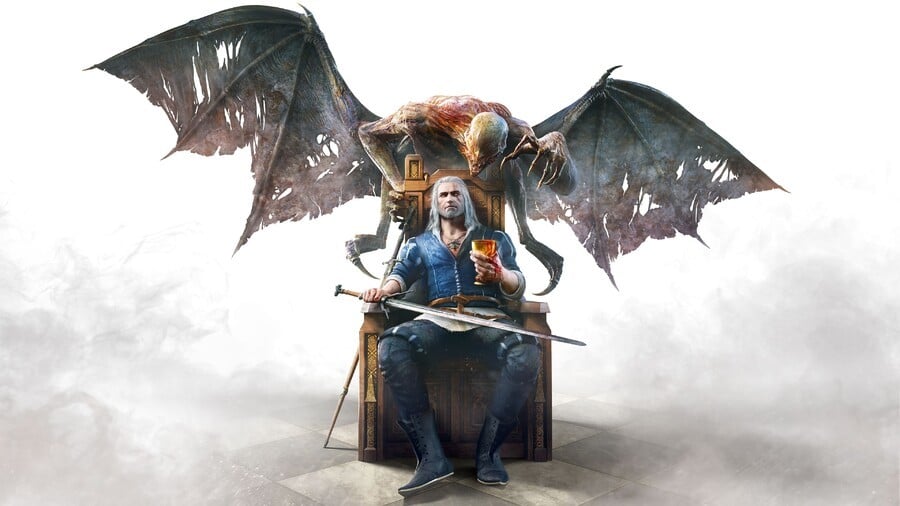
The DLC
On its own, The Witcher 3 was and still is a masterful RPG, but it's the title's two expansions that push it beyond all expectations.
The game's first DLC, Hearts of Stone, launched in October 2015. It didn't add a whole new map, but it did offer up two of the best characters in a game already stuffed with best characters. Between enigmatic antagonist Gaunter O'Dimm and the deeply troubled Olgierd von Everec, Hearts of Stone provides The Witcher 3's most intriguing tale -- and that's saying a hell of a lot.
Hearts of Stone gave us an amplified shot of deliciously dark and devilish storytelling, but The Witcher 3's second expansion, Blood and Wine, basically gave us a whole new game. Releasing more than a full year after Wild Hunt, Blood and Wine whisks Geralt away to the sun-soaked land of Toussaint for one final hurrah. It's arguably the most polished and refined adventure in the whole of The Witcher 3, all while bringing at least another 25 hours of questing to the table alongside a completely new map.
Like the game's writing and quests, these two expansions can still be lauded as best in class. As far as DLC goes, they're near perfect.
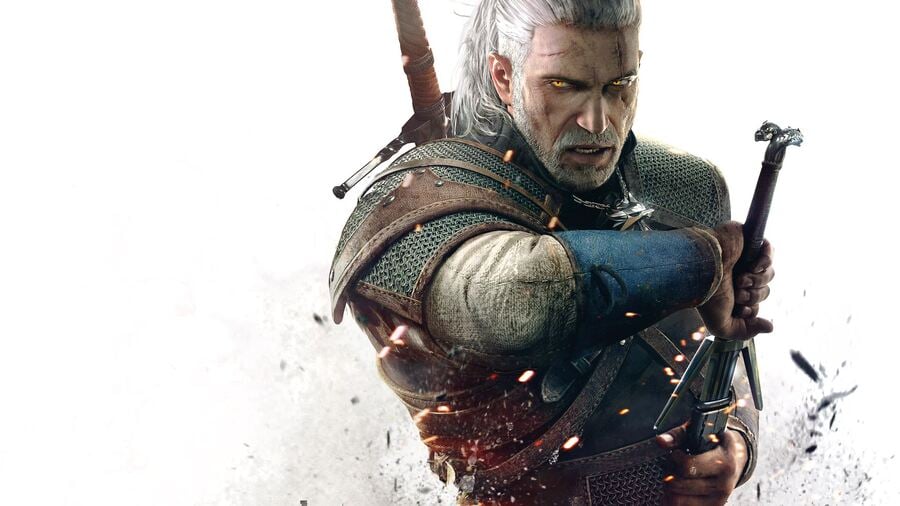
The Conclusion
Five years later, The Witcher 3: Wild Hunt is still the best RPG that money can buy on PS4. While bits and pieces of the experience are showing their age, replaying the game now makes you appreciate just how high CD Projekt Red had raised the bar back in 2015. In its writing, its characters, its world building, and its questing, The Witcher 3 still stands head and shoulders above its peers. Simply put, the game that does eventually knock Geralt off his throne is going to be very special indeed.





Comments 60
I recently started a second playthrough of The Witcher 3: Wild Hunt, and it's the first time I've played the game since its 2015 launch. It still more than holds up five years later — easily one of the best PS4 games of the generation. A certain 10/10.
Replaying it now (also BOTW). Amazing game still. The music is so good!
1. Witcher 3 is far and away my game of the generation, and I don’t see that changing (although I would be thrilled if TLOU 2 or Cyberpunk managed to take the top spot!).
2. I am glad this great piece mentioned the humor, because that is an underrated part of the game. No spoilers, but the ending of one conversation/argument with Yennefer may be the funniest moment I have experienced in gaming.
It’s definitely still brilliant, my mum ended up dropping off for now because the combat’s too involved at this moment for her but I think after the Uncharted games she’ll be able to handle more on screen at once. It’s both accessible and pretty complex at the same time, it just depends on your play style.
I would like to play it and go for the platinum but I’m absolutely useless at gwent 😭
For me only HZD gets close to it in terms of overall quality in a open world game this generation. And I've said it before but Fields of Ard Skellig is absolute god tier in gaming music.
Games get criticised for being too small/short all the time. I’d make the point that games like TW3 & the AC games are too big.
Something like HZD are much more manageable & don’t overstay their welcome.
That’s one of the reasons I’m holding off Cyberpunk until PS5. I know it’s going to demand so much of my time.
Well next replay witcher 3 is going to be on ps5 to cut down that loading screen 😂
I own this, but have never even booted it up. I haven't really played much of anything since finishing Outer Worlds, so I'll need to give this one a go.
I played the game at launch, then I only played the DLC a few months ago. Nothing changed, still a masterpiece.
A masterpiece. It's the closest I've come in gaming to the feeling of living inside a novel. The characters, the story, the world, pure immersion.
I didn't like it at first and gave up, stuck in a cave with Keira Metz.
Gave it a other go a year later and just tried to lose myself in the story and not the combat. How? I just put it on easy!
When I was more accomplished using the Signs in conjunction with swordplay then I set the game back to normal and continued my exploration of the vast world CDPR had created. It was a brilliant 2-3 months of gaming.
Also, the DLCs are brilliant and Toussaint is easily my favourite location in the game. Stunning and get very deadly, a bit like the gorgeous Yennefer!
😍
My second favourite game of its generation. I wonder if you can guess my favourite.
😉
A Witcher 4 with Ciri as the lead protagonist would be a thing of beauty and a day one purchase. CDPR, make it so....please!
🤞
My favourite game in the whole wide world. I can't bloody wait to step into the world of Night City next.
I played it for about 5 hours and then abandoned it last year. Not because I disliked it, necessarily, but it didn’t grab me and hold me like some games do. The prospect of spending 100 hours in the world didn’t appeal to me at the time. Maybe I’ll try again someday.
I think my luke-warm response is unfortunately because many games have copied The Witcher 3’s format to a degree and it feels less innovative by today’s standards. I realize 5 hours worth of 100 hours is poor sample size to judge however.
Oh and also the music. The score might not be as epic as Skyrim's but it is culturally rich with an identity of its own. One of the best things about the TV show is the music and you can tell that it was inspired by the game.
Gwent though, didn't really take to it.
Game of the generation for me too, consistently brilliant!
When we look back at this gen in 5 to 10 years time, this will be near (if not at) the top of the top 10 lists.
Here's for a PS7 remaster!
Excellent in every part, except combat: it's a shame that magic and weapons feel so insubstantial and intangible.
I still have to finish one of the DLC and I think I'll do that as @Col_McCafferty says: on easy just to enjoy the story and the setting.
Just finished blood and wine, and it was very bittersweet. Such a great ending, but I'm sad that there's no more story to tell.
I will never replay it since its extremely long, but this game is on my top 5.
The game is still good, the story and sidequest is still great, the combat is the weakest part of the game, the graphics good but pales in comparison to new titles like ghost of tsushima. After seeing the bamboo forest on ghost, the tree in witcher seems so static.
Crazy that it's been five years really. Still the gold standard in so many departments all these years later.
It is an absolute masterpiece. Yes the mission structure can be a bit repetitive but it's the story and context that pulls you through. Expected a shout out to the load times, they can be mad!
@Fuzzymonkeyfunk literally started a 2nd playthrough to get good at gwent, get more cards and win that tournament! Haha
@andreoni79 Do it!
Blood and Wine rocks!*
💪
*Unless you're referring to Hearts of Stone in which case that rocks as well. Dead Man's Party was sheer joy to play through and I had a goofy grin on my face during most of it.
@Col_McCafferty Yeah, Knack 2 baby!
I think is overrated just like BOTW, and sure the story is great but gameplay which to me is the most important element of a game is extremely clunky, great game but not a masterpiece like everyone claims but that's just my opinion
Definitely my game of the generation, which is strange since it was initially just a impulse buy and I didn't even enjoy my first 15 hours or so until I realised the genius behind it. Have never stopped playing it since really.
It is very good but the odd mission (planning the play with the mummers is a stand out) and being forced to play as Ciri at key moments holds it back from greatness for me
Hands down.... The best rpg....
This is a game that passed my by for some reason. I've no idea why as its clearly hugely popular. Although I have recently bought the version with the expansions in a recent sale. Not had change to play yet however. This article is great for someone like me who's gonna be playing it shortly for the first time.
One of my absolute favorite games this generation. Played through its entirety 2 times! The combat is super janky and “party members” like Keira or Yen are badly implemented in combat imho but it has so many other strengths. Would definitely replay on ps5 😉
The only major negative I found in the Witcher 3 was the leveling system. I spent 700 hours playing as Geralt and will never regret one moment of it.
I recently played it for the first time. It's certainly a great game that still holds up. I'm on the side that hates the combat though. It's unresponsive and clunky imo. Not in a 'fun' way at all. In terms of world building and quests, it's still the best RPG imo. Side quests in the Witcher 3 are better written and more fun than most main quests in other RPG. Graphics/performance also seem a little dated imo, but not distractingly so.
If only it had the combat of Bloodborne and the fun of Fallout 4(not saying it's not fun but y'know F4 and Skyrim are on a different level of fun), it'd be an almost perfect game. Nonetheless it still remains one of my favourite games of all time.
@TheArt Skyrim is legendary, definitely the most hours I have ever plunged into a sp game. It is definitely a lot of fun although I still have nightmares about those Frostbite Spiders. My first encounter with one particularly large one saw me jump out of my skin and run out saying "nope, nope, nope!". I'm so arachnophobic that I shuddered when passing by their corpse!
🕷️*
Well, until I play RDR2 a 2nd time and maybe pick up Persona 5 Royal at some stage in 2021.
😋
*Not their actual size, think of a hippo...with more legs and fangs instead of large teeth.
(shudder)
The music from the game is fantastic and even makes the series better.
https://youtu.be/uWBQHKrjNPM
I found it.....boring. I tried twice to get into it but I found myself in the inventory menu as much as playing the actual game, in the end I deleted it.
@Col_McCafferty 😁 oh really. But anyway I think what makes those 2 Bethesda games fun are the companions, most open worlds have you traveling alone. And then the looting and crafting. And then the almost ANYTHING can be a weapon. And then there's the pick up anything and wear no one cares. And then there's the no exclamation or question marks on map, go anywhere and go find your own side quests which makes for a lot of surprises in several playthroughs. Yea that's about what makes them super fun.
It's strange, I thought the combat was great and more interesting than a lot of games. On higher difficulties you really have to plan what offensive skills/items you use in order to beat certain enemies and the finishing animations were excellent. I suppose different mechanics suit different players.
My favourite game and I'm excited to see what they do with the franchise in the future. Now remake the first two for PS5 CD Projekt.
The Witcher 3, set in the done to death high fantasy setting, with rubbish fighting mechanics and the performance sucked. Couldn't get into it after the fantastic fox engine MGS 5 and the Decima engine fuelled HZD. Both have way better fighting and for me the better games.
That said if I had played W3 first, well I could have a different opinion but the technical issues and clunky gameplay put me off.
As far as I am concerned, its still the best game of this generation (so far). Nothing yet has come close!
The game has many flaws, I would consider it a 7/10
It's alright. I played for 75 hours or so on PC before stopping. Mulling over the idea of picking up the Switch version or something to incentivize me to go back to it.
The best aspects of it were the presentation (the environments are vibrant and gorgeous) and the intricately interwoven side-quests. Oh, and the music. Really solid OST.
I've heard so many complaints about the combat, but I never had any issues with it, personally. Feels nice and responsive to me.
The gameplay itself is... decent, but unremarkable. Using your Witcher senses to track people in half the side-quests feels lazy and gets tedious over time. EXP distribution between side and main quests feels broken, to the point where most side-quests feel largely pointless to pursue. The main quest, up to the point I played at least, was a long series of wild goose chases leading into interesting side-quests, but doing very little to compel me down a central narrative path. And the article already notes how bad its open world aspects are.
It's a good game, but definitely overrated.
So, turns out even The Witcher 3 is overrated. Who knew?
Has anything truly great ever been made?!
🤔
Such a cynical world we live in. Really they should have stopped making games at Tetris, saved themselves all that time and effort.
😉
@Col_McCafferty There is not a single game that is not overrated in one way or another.
For example lets take two of your favorite games, RDR 2 and Witcher 3. Reviews (both from proffesionals and users) for both games acknowledged those games had issues either from technical side of things, gameplay or even narrative and yet they received 10/10. And as such they are overrated by default.
Same goes for one of my favorite games this gen, like MGSV. Many have mentioned the story issues and repettetive nature of mission structures, and yet... it has received 10/10 from those same reviewers, and as such it is also overrated by default.
I doubt this kind of thing will ever change. Might aswell enjoy the games you trully enjoy, and put the ''haters'' on mute, cuz you or anyone else will likely not change their minds.
Tried to play it 3 times and could not get into it. Story was slow, characters were bland and the combat was sluggish. The worst thing is, when ever I bring this up I am seen as a mad man who hates everything and when I ask why they think it is so good, the only answer I get is that it is soooo good. Madness!
@Col_McCafferty it is over rated, IMO and no one has ever convinced me otherwise, other than telling my it is good and I should play it (see above)
All entitled to our own opinion - I believe that the Bioshock series is a master piece but others think it is over rated. That is fine & I respect their opinions.
@ZeD ''The worst thing is, when ever I bring this up I am seen as a mad man who hates everything and when I ask why they think it is so good, the only answer I get is that it is soooo good. Madness!''
Welcome to the world of fanboys, which Witcher 3 has plenty of. A true fan acknowledges the issues, but also goes more in-depth why he liked the game.
@DominatorV93 A game, or any piece of art or entertainment, doesn't have to be perfect to warrant a 10/10. It can have flaws, sometimes obvious ones at that, but it's what it does well that is being judged.
Some like.'gamey' games where it's all.about combat and combs and high scores. Basically arcade games.
Some like to lose themselves in a game in the same way one can lose themselves in a good book or TV series. It's the characters, the story, the world. It's that sense of relaxation that can come say with riding a horse through the old Wild West all from the comfort of one's home.
It's fantasy, wish fulfilment, pure escapism. And yeah, occasionally you get to shoot some bad guys or take down a Griffin.
It's the overuse of the word 'overrated' that bothers me, not if someone didn't like the game or not as I'm sure there is plenty of stuff you like that I don't or wouldn't want to play or watch.
I would prefer 'overhyped' as it's possible for something to be good but still receive more hype than it deserves, Game of Thrones springs to mind especially when it was at its peak.
It's not a crime if you didn't like The Witcher 3 or RDR2 but calling either overrated implies that your opinion is right and those that think otherwise are wrong. I don't like that, think it's arrogant.
Anyway, The Witcher 3 has sold by the truckload and helped make CDPR one of the most respected developers out there. Like it or not it was definitely a success and one worth celebrating.
It took me four years to beat the Witcher 3. I kept deleting and downloading it because the gameplay is what kept me from beating it. The story is magnificent and I really set engaged. When I get more free time I will be tossing a coin to my Witcher & getting the DLC packs. I just wish the gameplay wasn’t so bad.
All time favorite video game! I played for the Platinum once, then once again with the GOTY Edition. And I’ve recently upgraded to a SSD and accidentally deleted all my saves so now I have to play to again 😏
Ahhh the Witcher 3 the game that is ALWAYS in my backlog..
Every time I start it I get distracted by some other games. Game is totally up my alley but for some reason I don't get around playing it. Maybe the scope of it and knowing it's big so I will be spending a lot of time in it..
One day though..
I'm ashamed to say that I've not really played the witcher games (add that to the long list of popular media I haven't consumed including, but not limited to, Star Wars, Legend Of Zelda, Portal, The Wire and Elder Scrolls) at all, other than the tutorial of 3. I played it on steam and my pc nearly melted. I want to get into it, but will probably have to repurchase it on console to make sure that I actually play it.
Cyberpunk doesn't interest me at all though oddly 🛡🛡🛡.
I never played it. I've watched some gameplay videos and I'm not impressed. I'm also very cautious of any game being called a masterpiece. I wouldn't have the patience or 200 hours.
Always amuses me how comments usually skew towards negativity, while much broader polls included in an article tell a completely different story.
@ZeD 'characters were bland'
You bloody mad man.
@ApostateMage you see! It is the only response I get 😂
I find it amazing when people say Geralt is amazing but I played the tutorial area and went to a bigger city and he was just so bland.
@ZeD I thought exactly the same thing when I first played The Witcher 2 but he did grow on me throughout that game. I remember slating him on game forums about how emotionless he was and everybody was explaining to me why he was like that. I didn't know much about The Witcher back then though.
@ShogunRok You got a link to a forum or reddit or something for discussing The Witcher 3 or am I 4 years too late?
Got a few questions like - an error message keeps popping up every few minutes when the game autosaves while I'm playing? Is that likely a game bug or a bad HDD?
I let the tree ghost into the horse, who then wiped out that town, the wife died, then the guy killed himself. If I go back 5 hours to that previous save file - I keep 4 running - will it dramatically change things? My wife, watching me play all 30+ hours, isn't happy about the town. I kinda feel like if I kill the tree spirit the 3 sisters will just kill everyone instead.
I just crossed the guarded bridge to Novigrad, but still have the entire right half of the map filled with question marks, so may travel a bit before crossing.
My take so far - yeah the fighting is too weird, I just push square and keep the queen shield on. That's like 90% of my fights. L1 and L2 get confused so I curse a lot. Opening 15 hours were way boring but it obviously picks up after leaving White Orchard and the castle. I'll keep going b/c the story and characters are good, and I like exploring. Inventory management sucks, WAY too many things in this game I don't use, but it's better than KoA:R so I deal. I like Tomb Raider 1 and 2 more, AND HZD, both are more focused and story driven, but it's better than BOTW which was too empty, and no voice acting bothers me to this day.
I have until HW AOC to finish it, wish me well. 😁
@rjejr Quick answers to your questions:
Not sure about a particular forum. Could just try the official Reddit, but I'm not sure how active it is with regards to the actual game these days — especially as a relative newcomer.
I've never heard of this autosave bug — that could be some kind of save corruption, or a problem with your hard drive. If you aren't having issues with any other game, I'd maybe try turning autosave off in the options menu. Very weird, and I wouldn't want it wrecking your game down the line.
The tree ghost doesn't have a HUGE impact on the rest of the game. It's meant to be a tough choice that makes you think about the consequences. I wouldn't worry about it too much unless you really, really don't like how things turned out (I won't spoil the other option!).
Hopefully some of that helps.
@ShogunRok Thanks for all of that. Maybe I'll save killing the tree ghost for the PS5 4k version. Now if my wife would just stop complaining about it.
I'll turn off autosave, good suggestion. It's been my wife's job the past 23 of JRPG playing to remind me to save my game every 2 or 3 minutes anyway. Half the time I can't b/c the game is autosaving. So that error may be my doing, CD Project Red hasn't met my wife.
@ShogunRok I finished the Kingmaker sidequest in Skellige last night - level 22 - and I'm very disappointed in CD Project Red for not awarding me a "Geralt and the 3 Bears" trophy. 😂
82 hours in. No horse racing, gwent or fist fighting, just main story and sidequests. Can't even begin to imagine how many more hours it would take to get to level 34 to go do the Blood & Wine DLC. I met those 2 soldier boys to escort me there but couldn't get past that "firewall" fight.
Taking the night off - not for the debate, NFL game - then will spend a night doing some more quests on Skellige before heading to Mahren Kahr (whatever) that suggests level 19 and stopping to pick up the ugly baby. Barron is dead so I finished most of that I reckon.
No questions for ya today, but it'd been 3 weeks so I figured I'd update ya. Still going. 1 month until HW: AoC then I'm done w/ this regardless of where I am. Maybe I'll come back to Blood & Wine after HW?
Show Comments
Leave A Comment
Hold on there, you need to login to post a comment...